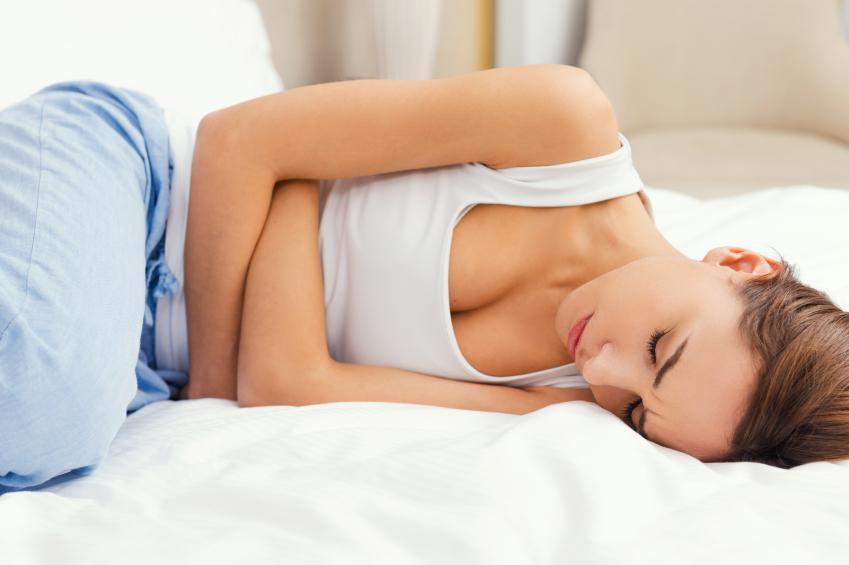PMS is so common among women of child-bearing age that many of these women think this is normal and just a part of life. It is estimated that seventy to ninety percent of women in this age group suffer from premenstrual syndrome (PMS). Symptoms may range from mood swings, headaches, bloating, anxiety, irritability, depression, tender breasts and insomnia. A severe form of PMS, called Premenstrual Dysphoric Disorder (PMDD) affects around ten percent of women. Symptoms of PMDD are the same as PMS although emotional symptoms are usually more predominant and debilitating. These include depression, irritability, mood instability, anxiety, difficulty concentrating and fatigue. The symptoms of PMS typically start around ovulation (1-2 weeks before menstruation) and end 1-2 days after menstruation starts. There is no single underlying cause of PMS, and for every woman it may be a different combination of underlying factors including lifestyle, nutrition, emotional stress and genetic. With this in mind, finding a solution will not be clear cut, but following the recommendations below will most likely improve, if not resolve, your PMS symptoms.
Lifestyle Factors
Diet—Many people regularly eat a diet high in processed foods and foods that promote inflammation. Reducing or eliminating refined carbohydrates including sugar and flour can be very helpful. Also, make sure you are getting adequate high-quality proteins from sources such as grass-fed, pasture-raised meats that are free of hormones and antibiotics, pasture-raised eggs and whey protein. Increase your fiber intake by including an abundance of fresh vegetables, raw nuts and seeds and fresh fruit. Some women have seen improvements in their PMS symptoms by going gluten or dairy free. Also, make sure you are getting plenty of healthy oils and fats from your diet or supplements including omega-3 essential fatty acids, olive oil and coconut oil. Avoid or reduce vegetable oils which are high in omega-6 essential fatty acids, as well as trans-fats, as these promote inflammation. It is important to note that healthy fats and oils are the major building blocks used to make hormones. You may also want to reduce or eliminate caffeine and alcohol, as these have been shown to worsen PMS symptoms.
Sleep—Not getting adequate sleep (7-9 hours per night) is a surefire way to get your hormones out of balance. This is essential not only for healthy hormones, but for health in general.
Exercise—Research has clearly shown that women who regularly exercise have milder or no symptoms of PMS compared to women who don’t exercise regularly. On the flip side of this, women involved in intense, extended exercise can disrupt normal, balanced hormone cycles.
Stress—Mental and emotional stress can lead to an imbalance of estrogen and progesterone causing or intensifying PMS symptoms. Some natural ways to help offset stress include getting outside for a walk, massage therapy, meditation, taking a hot bath with Epsom salts, and yoga.
Natural Solutions To Get Rid Of PMS
Foundational Nutritional Supplements—It is not uncommon for PMS symptoms to be caused or worsened by nutrient deficiencies. Using a high-quality, natural food-based multivitamin/multimineral can help to fill in the gaps. Be careful not to use a synthetic version, as much of these nutrients are either not absorbed or can create unwanted side-effects. Omega 3 oils are important precursors for hormones. Many people do not get enough of these in their diet alone. Probiotics are not only important for digestive and immune support, but also have recently been shown to help with mood balance and stability which can be an issue for women who suffer with PMS.
Black Currant Seed Oil—BCSO has been used extensively in Europe to help with symptoms related to PMS. BCSO has also been shown to be very helpful for reducing inflammation and boosting your immune system.
Chaste Tree—Chaste Tree has been used traditionally for over 2,500 years for its beneficial effects on female hormones. The active components in Chaste Tree help to support normal levels of prolactin and progesterone.
Chiropractic—Chiropractic adjustments have been shown to effectively reduce PMS symptoms when compared with placebo. Symptoms of associated low back pain, abdominal cramping, and dysmenorrhea usually are effectively managed with chiropractic adjustments.
Acupuncture—Numerous research studies have proven the beneficial effects of using acupuncture to treat PMS symptoms. Acupuncture has been shown to be most effective in helping with cramps, anxiety, insomnia, headaches, and nausea.
Difficult Cases—Whenever the more common solutions for PMS are not getting effective results you may want to consider Liver, Digestive, and/or Adrenal support as these organs and systems are involved with excretion and/or production of hormones.


Recent Comments